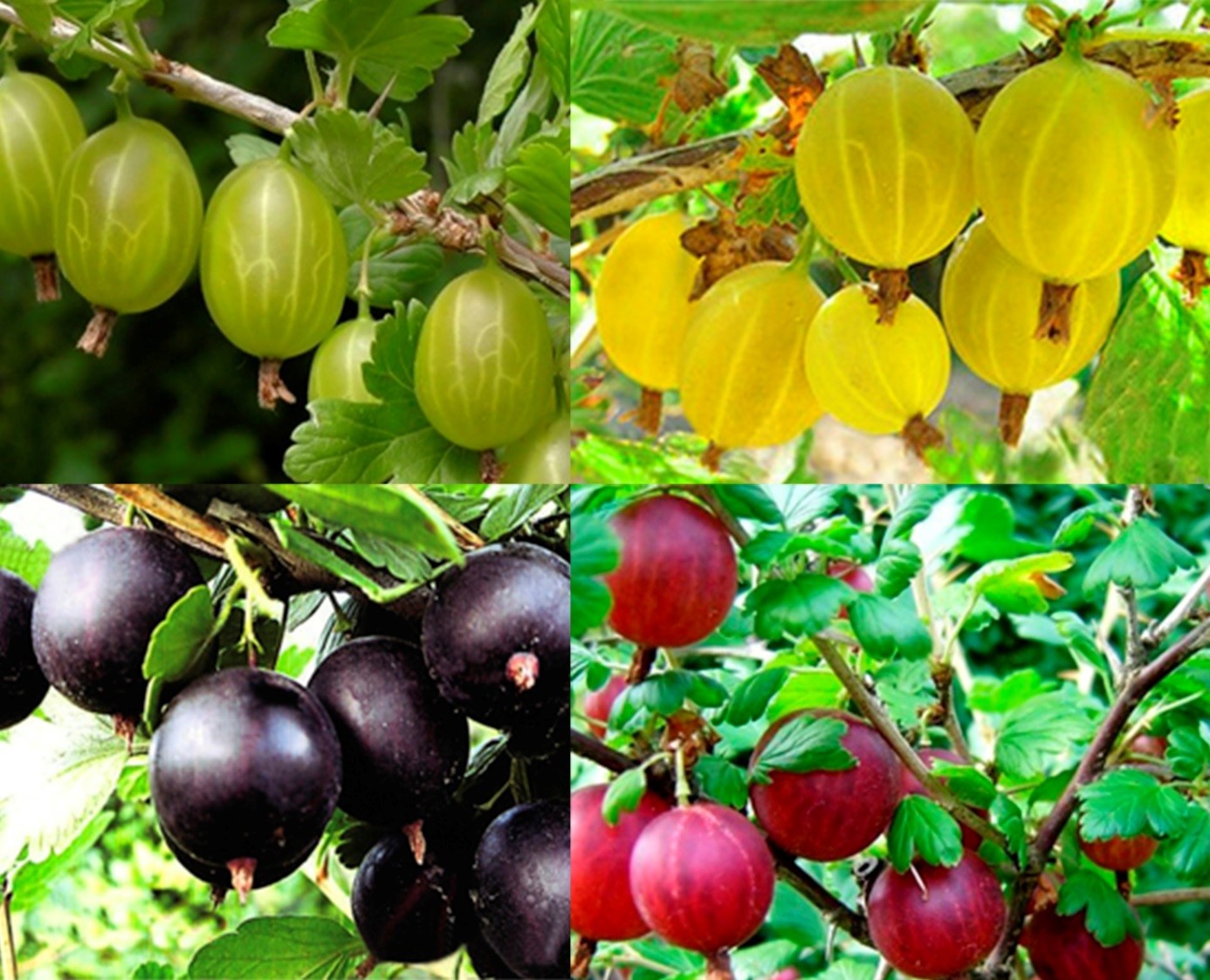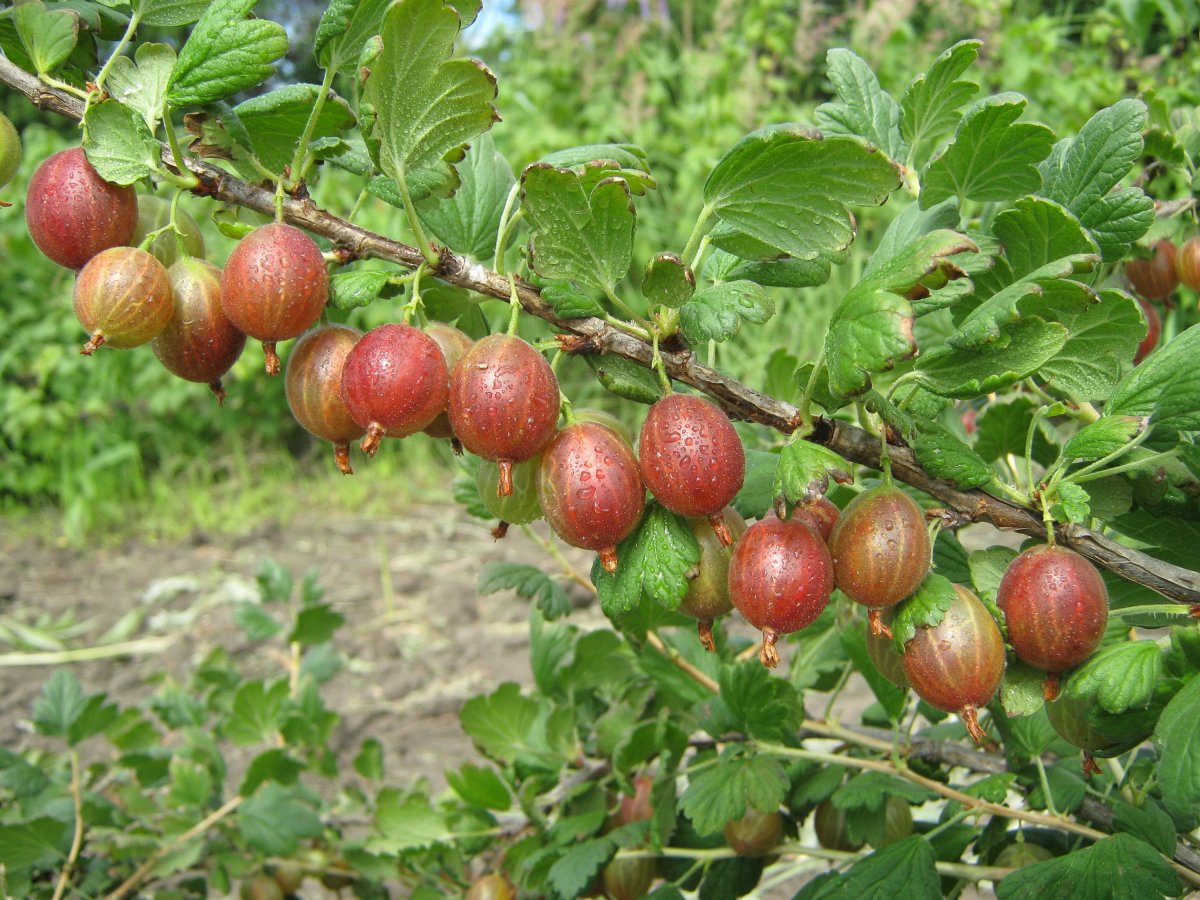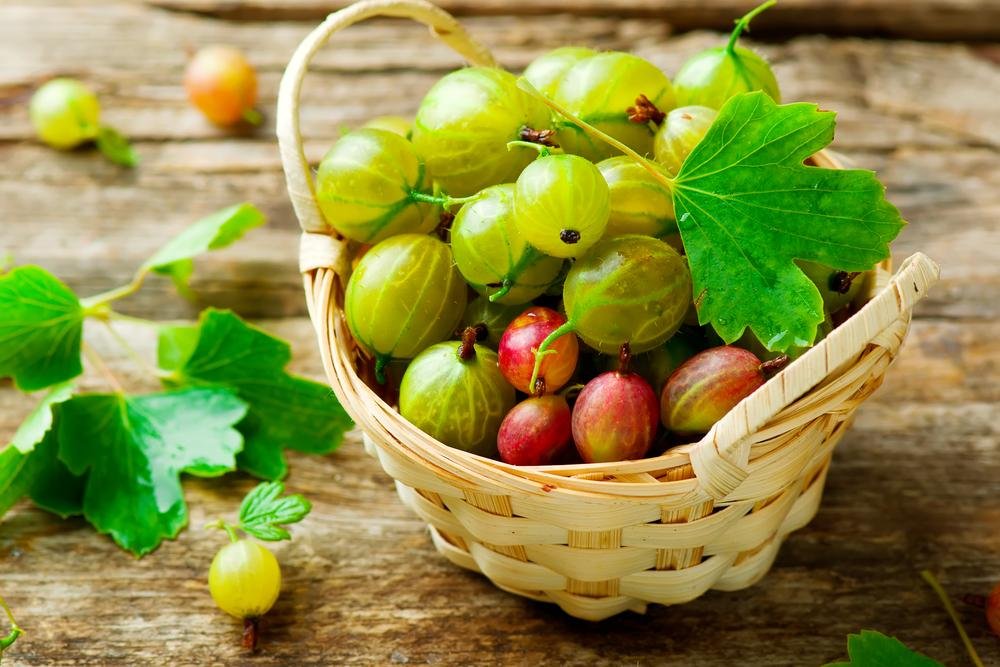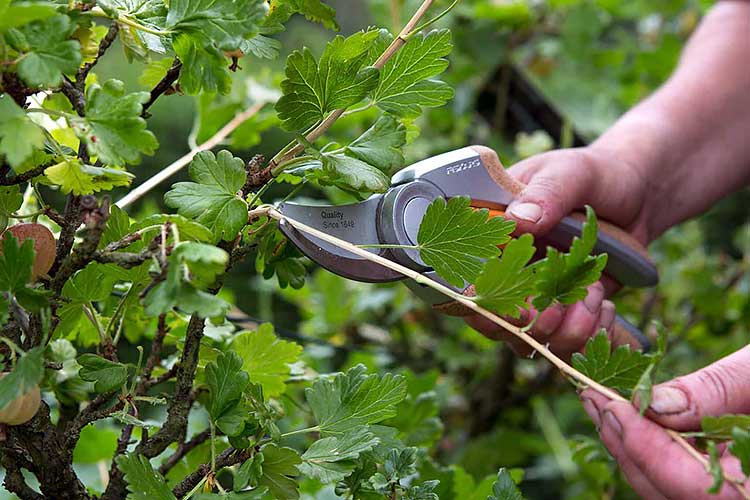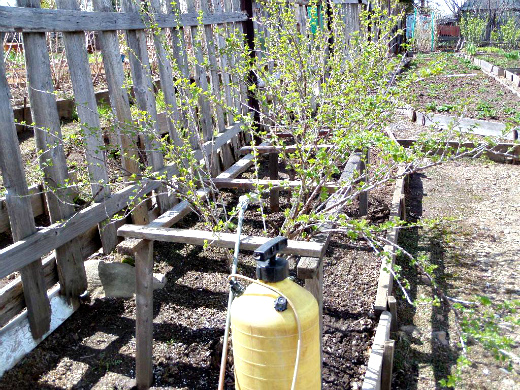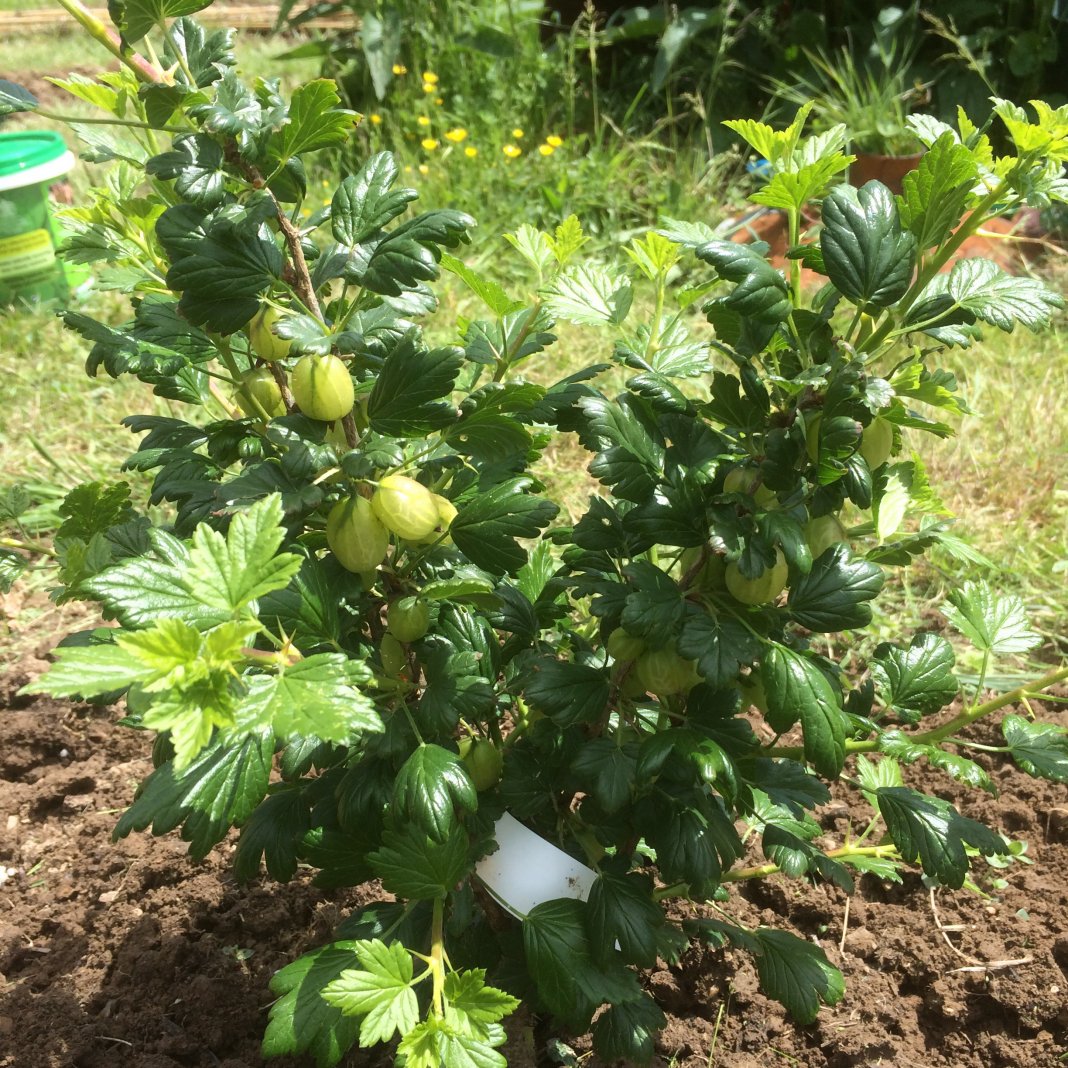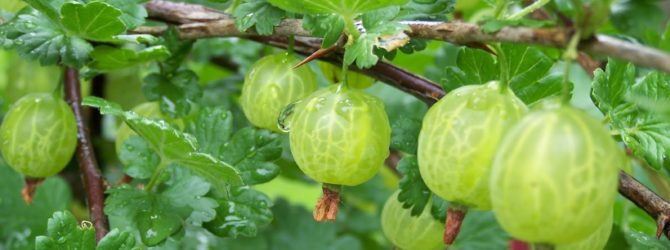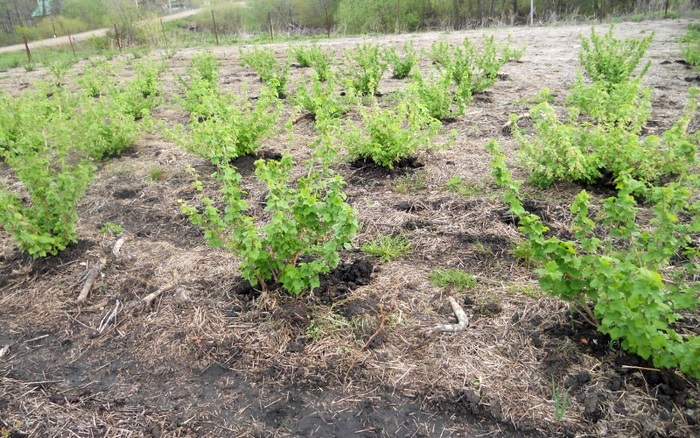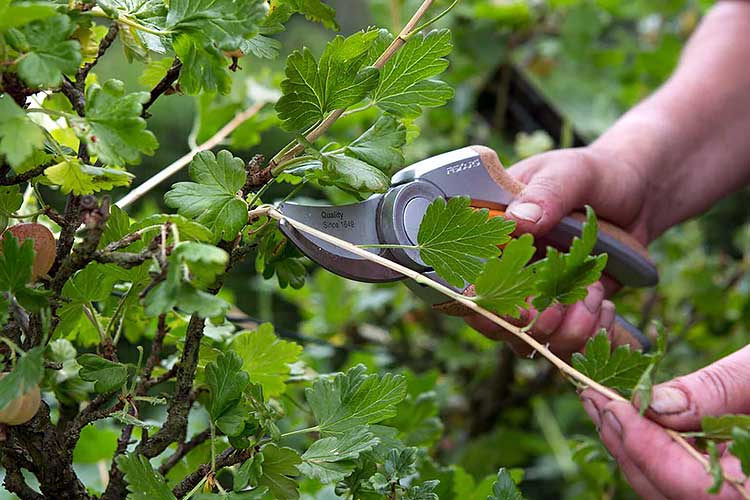Among the shrubs that allow you to get a harvest of berries, gooseberries are most in demand. The taste and aroma of these fruits show excellent values, therefore they are used for harvesting for the winter. Different varieties of gooseberries differ in terms of hardiness, yield, color and taste of berries. There are sweet, sour varieties that are resistant to frost and pests, loving warmth or shade. That is why, before choosing a variety for planting in your own garden, you need to familiarize yourself with the features of the most popular of them. Good conditions for the growth of berries are provided by the Krasnodar Territory, but in the Moscow Region or the Leningrad Region you can get a bountiful harvest.
Gooseberry classification
A feature of the gooseberry classification is the fact that different indicators are taken into account:
- origin of the variety;
- the presence or absence of thorns (their number);
- berry size;
- yield indicators;
- fruit skin color;
- taste;
- the size of the bushes;
- indicators of resistance to diseases and pests.
Attention is also paid to the structure of the berry.
Each variety of berries differs in several ways, but the main ones are winter hardiness and resistance to diseases. By origin, all species are subdivided into European and American. The former allow you to get large berries that have a mild taste and pleasant aroma. It is noted that in European varieties, in most cases, disease resistance is medium or low, therefore, in the process of care, special substances or folk recipes must be used. The main disadvantage of this group of varieties will be difficult reproduction.
American varieties are hardy - they can easily move winter or transplant to a new location in the garden. They are also resistant to diseases and pests, which has a positive effect on the yield and quality of the berries. Reproduction of varieties is easy. The negative side is the increased number of thorns, their size is medium or large, the size of the berry is average, the taste is worse than that of any variety that belongs to the Western gooseberry group.
All the positive aspects are taken into account here:
- high productivity;
- disease resistance;
- large and sweet berries;
- winter hardiness and frost resistance.
Also, the number of thorns is minimized (they may be absent altogether).
Gooseberries are also classified according to the ripening rate:
- early;
- middle;
- late.
There are also mid-early or mid-late varieties, which allows you to get a berry without interruption during the season, if there are bushes of all types in the garden. An additional parameter by which a suitable variety should be selected is self-pollination (present or not). If possible, the berries will form even if there are no pollinators in the area next to the bushes.
By such a parameter as the color of the berries, gooseberries are divided into groups:
- black - shades from purple to deep black;
- yellow - berries are golden, orange, amber;
- green - green and green-yellow shades;
- red - burgundy, pink.
According to this parameter, there are such divisions:
- oval;
- spherical;
- pear-shaped;
- ovoid;
- keg.
This indicator is important from an aesthetic point of view.
The varieties are also classified according to the resistance of berries to mechanical damage. It should be borne in mind that large-fruited or an indicator that the variety is sweet does not guarantee long fresh preservation of the harvested crop.
It is necessary to take into account such a parameter as the size of the berries. The variety will be large-fruited if the mass of each berry is at least 5 g. The medium-fruited group of gooseberry species includes plants when the mass is less than 5 g. Additionally, all fruits can be divided according to the structure of the skin, which is smooth and with a hairy (rough) coating.
Description of TOP 10 varieties
The best types and varieties of gooseberries:
- Amber - the variety is high (up to 1.5 m). The peculiarity of the crown is that it is thick, spreading, capable of creating a light shadow. There are many thorns, but the berries are large, yellow-orange in color. The shape of the fruit is oblong, weight is 5-6 g. Ripening occurs early, the yield is high. The variety is frost and drought resistant. Large-fruited sweet gooseberry of the Yantarny variety is suitable for making jam or long-term storage;
- Variety Protector - large and with a pleasant sweet and sour taste. High shrub (up to 1.5 m), straight crown. The shape of the berry is oval-pear-shaped. Feature - the weight of the fruit reaches 10 g. The ripening period is late. Mealy bloom or frost is not dangerous;
- The eaglet is a thornless variety that facilitates the harvesting process. The bush is medium in size, the crown is compact, small in size. In most, the gardener seeks to plant it on the site, since the variety has a pleasant sweet and sour taste. The color of the berries is black, there is a bloom on the skin. High yield, early ripening. This gooseberry is resistant to frost and fruit rot. Black gooseberry without thorns varieties for the Moscow Region Eaglet is well suited for winter harvesting;
- Ural is a variety that is well suited for growing in the difficult conditions that the Urals possess. The size of the shrub is medium. The berry weighs 7-8 g. The shape of the berries is oval. Ripening periods are average. The taste is sweet. Good frost resistance, no thorns. Green gooseberries are used to make drinks;
- African - there are no thorns on the bush, its size is average. The berries are round, dark purple in color. The taste is sweet and sour, reminiscent of black currants. Feature - high yield, but the first harvest can be done 2-3 years after planting. Good winter hardiness;
- Indian gooseberry Amla is an Indian gooseberry that grows on a tree (up to 18 m). It is the most unusual for varieties of the middle lane. The variety is fruitful, the berries are large, brown. There are stripes on the skin;
- Krasnoslavyansky - the bush is medium in height, there are thorns. This variety is a good option near Moscow, since the middle strip meets all the necessary climate requirements. The berry weighs 8-9 g. Its shape is round, red in color, without pronounced pubescence. The taste belongs to dessert. The first crop is harvested in the second year (up to 7 kg). High resistance to frost;
- Consul (Senator) - there are few thorns on the bush. The berries are large (up to 6 g). The color of ripe fruits is dark burgundy. Great for cooking. It tolerates frosts down to -37 degrees. A consistently high yield begins in 2-3 years;
- Belarusian sweet is a bush with a lot of thorns. The berry weight reaches 8 g. The color of ripe fruits is bright green. The variety belongs to the old selection. It tolerates severe frosts (-38-39 degrees);
- Russian yellow - the central region is suitable for growing the variety. The fruits are pear-shaped, weight - 5-6 g. There is a waxy bloom on the skin. Ripening in time is average. It tolerates sharp temperature changes. Resistant to disease.
You can also choose among other varieties and types of gooseberries, since there is a self-fertile or undersized, frost and drought-resistant species.
Other varieties of gooseberries
If the question arises, which option to choose for planting in the garden, then the list of varieties includes (description):
- Amursky;
- Antillean;
- Donetsk large-fruited;
- Captain;
- Chinese;
- Columnar;
- Royal;
- Invicta (Invicta);
- Aboriginal;
- Aladdin;
- Altai yellow;
- Altai license plate;
- Aristocrat;
- Harlequin;
- Ballet;
- Baltic;
- Seedless;
- Belarusian red;
- White Nights;
- White Smith;
- White triumph;
- Tailless green;
- Kolobok;
- Tailless black;
- Bogatyr;
- Bottle;
- White triumph;
- Varshavsky;
- Veteran;
- Garkate;
- Goliath;
- Grandee;
- Gulliver;
- Yellow;
- Green rain;
- Large green;
- Golden;
- Golden light;
- Isabel;
- Kazachok;
- Kamenyar;
- Captivator;
- Kiwi;
- Cooperator;
- Coral;
- Royal;
- Kostroma;
- Krasnoselsky;
- Red thornless;
- Large red;
- Red triumph;
- Ksenia;
- Kuibyshev black-fruited;
- Affectionate;
- Lefora;
- Lemon gigantic;
- London;
- Favorite;
- Masheka;
- Masha;
- Lighthouse;
- Moscow red;
- Shaggy;
- Musky;
- Muscat;
- On the trunk;
- Smart;
- Tender;
- Neslukhovsky;
- Olavi;
- Pax;
- In memory of Komarov;
- Pixwell;
- Purmen;
- Rawolt;
- Early gennings;
- Redeva;
- Pink;
- Sadko;
- Firework;
- Nugget;
- Samurai;
- Northern Captain;
- Serenade;
- Lefora seedling;
- Seedling shift;
- Blue;
- Sirius;
- Savory yellow;
- Change;
- Sun bunny;
- Variety Mashenka;
- Variety Shalun;
- Stanichny;
- Slim;
- Souvenir;
- Tatyana;
- Dark green Melnikov;
- Astringent sweet lilac;
- Tixia;
- Ural besshorny;
- Ural pink;
- Phoenix;
- Finnish yellow;
- Finnish green;
- Finnish red;
- Hinnomaki Gelb;
- Hinnomaki mouth;
- Hinnonmaen Punainen;
- Hinnonmaki green;
- Hinnonmaki ed;
- Chelyabinsk besshorny;
- Chelyabinsk green;
- Chelyabinsk slightly spiked;
- Chernomor;
- Black-fruited;
- Black velvet;
- Mischievous;
- Shershnevsky;
- Generous;
- Eridanus;
- Spring;
- Shaggy;
- Sirius;
- Charm;
- Varietal family nursery;
- White Smith;
- Hinnomaki;
- Black (sweet and sour taste);
- Stamp.
So, planting standard gooseberries and caring for which require special skills, will allow you to get a consistently high yield, large sweet gooseberries are ideal for harvesting. Having studied all the features, positive and negative sides, the gardener will be able to create a gooseberry garden. Sometimes the name indicates a feature of a species or variety, so you need to pay special attention to this.
For a high yield of useful berries, you can choose a proven old variety or give preference to new ones. It is possible to grow the largest and sweetest gooseberry, focusing on the agricultural technology. So, the Moscow region and the west of the country will require paying attention to fertilization and weeding, the northern directions (Leningrad region, Siberia or the Urals) - to the issues of warming with the arrival of winter. Ripe gooseberries can be round or oblong in fruit shape, green, red, yellow or black in color, so the plant is used as a garden decoration. If you choose the right varieties according to the ripening time of the berries, then you can get a visually attractive picture of multi-colored fruits or harvest for a long time.
The options that are most suitable for the gardener should also take into account his taste preferences, since the variety in this indicator is also large in berries. Additionally, gooseberries are a source of useful trace elements and vitamins, so the popularity of the berry is constantly high. You can also choose a variety that is not studless for Siberia or other regions, thereby facilitating the collection process.
